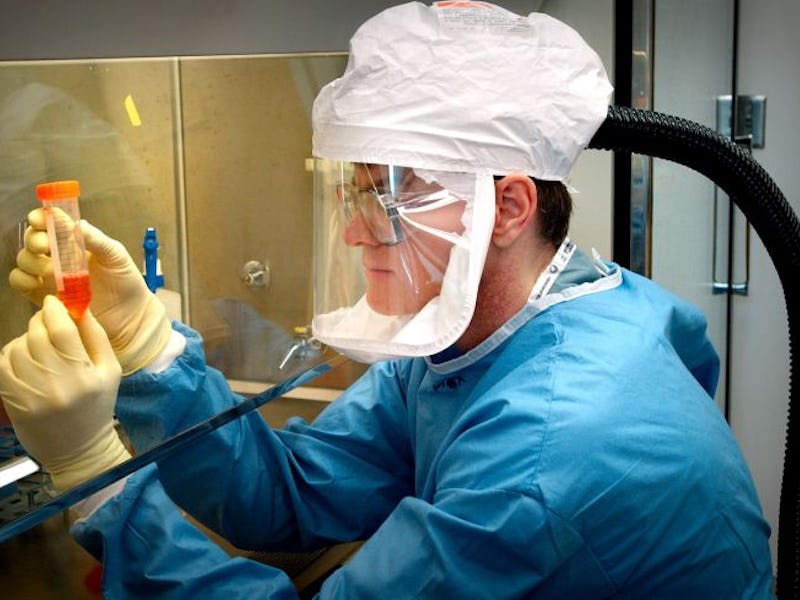U.S. Government Lifts 3-Year Research Ban on Engineering Lethal Viruses
It's "essential to protecting global health and security."

The United States National Institutes of Health is ending a three-year moratorium on funding research on extremely dangerous viruses that were previously considered too risky to study in a lab. On Tuesday, the agency announced new guidelines for scientists seeking NIH support in studying pathogens capable of creating a pandemic. Now, in NIH-approved labs, scientists can increase the strength of viruses like severe acute respiratory syndrome (SARS), Middle East respiratory syndrome (MERS), and influenzas to understand how they evolve and spread.
Scientists are celebrating the end of the moratorium as a forward step in their work and in public health in general. On Monday, NIH Director Francis Collins said in a media briefing that the decision will “help to facilitate the safe, secure, and responsible conduct of this type of research.”
The viruses affected by the previous ban, like H5N1 influenza, cause severe disease and have a high mortality rate. According to the World Health Organization, the mortality rate for human cases of H5N1 is 60 percent, the mortality rate for MERS is 35 percent, and the mortality rate for SARS ranges from one to 50 percent, increasing in precariousness as a person ages.
Lung tissue pathology due to SARS.
The U.S. government instituted its ban on funding experiments that could potentially make pathogens more transmissible in 2014. In these “gain-of-function” studies, designed with the goal of understanding disease pathways, scientists increase the ability of the infectious disease to spread by enhancing its pathogenicity, or its ability to cause disease.
Doing so gives scientists a better understanding of how a virus interacts with its host and how genetics affects its strength, which is necessary for creating more effective vaccines.
The original ban was put into place after a series of careless biosafety incidents at federal research facilities. In 2014, two labs were forced to close after the facilities accidentally shipped live anthrax and a highly virulent strain of H5N1. In that same year, six vials of live smallpox were found in an FDA lab in Bethesda, Maryland, and 75 CDC employees in Atlanta were thought to be exposed to anthrax.
“During this pause, the U.S. Government will not fund any new projects involving these experiments and encourages those currently conducting this type of work — whether federally funded for not — to voluntarily pause their research while risks and benefits are being reassessed,” the White House Office of Science and Technology announced in 2014.
“The funding pause will not apply to the characterization or testing of naturally occurring influenza, MERS, and SARS viruses unless there is a reasonable expectation that these tests would increase transmissibility or pathogenicity.”
A 3-D images of Middle East respiratory syndrome, known as MERS.
The lifting of the ban, which scientists previously argued was too broad, means that the government has decided these gain-of-function experiments aren’t a serious threat to the public. In the new guidelines, the NIH says that research involving potential pandemic pathogens is “essential to protecting global health and security” and outlines the new rules for studying the pathogens. These include the provision that says the experiment can only proceed if there are “no feasible, equally efficacious alternative methods to address the same question in a manner that poses less risk than does the proposed approach.”